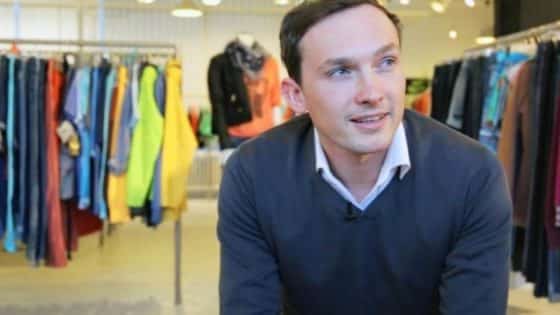
[Image Credit: MCA]
Bankruptcy protection, voluntary administration, financial collapse, business failure — It really hasn’t been a good year for many of Australia’s best-known fashion brands and retailers.
Is 2017 the year that broke Australian fashion?
So far, 2017 hasn’t been an auspicious year for local clothing brands. In fact, it’s seen nothing but trouble and turbulence among the household names of Australian fashion, with David Lawrence and Marcs going into voluntary administration before being rescued by Myer, and Rhodes & Beckett and Herringbone clearing stock — they collectively owed $40 million to creditors — before they too were saved, this time by a private equity-backed management buyout.
Even international brands with global appeal are suffering Down Under. US clothing brand Gap — a massive brand popular around the world for its luxury fashion offerings — has announced that it’s shutting up shop, with all six of its Australia stores to be closed by January 2018.
But the closures don’t end there. Major UK fashion label, Kit and Ace, announced in April that it will be closing its Australian stores (along with its US and UK stores) and Topshop’s local administration recently fell into administration. As a result, it’s safe to say that the outlook on the local fashion retail horizon looks particularly grim for many big names in fashion.
Why is this?
Considering just how fashionable Australians have become and how much many are prepared to spend on fashion and luxury items, it seems difficult to believe that fashion brands which were once in high demand are now dropping like flies. Sure, Australia isn’t the most cost-effective place in the world to do business, but why is the outlook for local fashion retailers so bleak?
There are a few reasons for this, starting with the arrival of global mass ‘Fast Fashion’ retailers, like H&M which made its presence felt when it arrived here in 2014. But while Fast Fashion is certainly a major reason why Australian fashion retailers are feeling the pinch, it’s far from the only reason why our local fashion brands and stores are finding times particularly tight.
Local labour costs, which are significantly higher Down Under than in the textile belt running across South and Southeast Asia — Bangladeshi and Cambodian workers make a little over US$100 per month — explain why local fashion labels which keep production in-house may be struggling to compete. However, that doesn’t fully explain why local fashion brands and retailers are struggling.
Bricks-and-mortar retailers of all sizes are affected by rising rental rates — retail rental rates in Australian cities are among the highest in the world — which is often cited as the reason why the smaller brands find it difficult to turn a profit. Nevertheless, experts believe that there are other, more dominant factors which are causing the serious disruption we’re currently seeing, a disruption that’s set to snowball as investors are now looking at the industry with caution.
The inability of Australian brands and retailers to compete with innovative global companies which sell cheaper products that are of equal or better quality is cited by many experts as the dominant reason for the current situation. And the appeal of fast fashion, the rise of ecommerce and the escalating rental rates in Australian cities aren’t helping the situation much either.
So, if the present situation is a combination of factors, all of which are set to continue along their present trajectory — upwards — what should Australian fashion brands and retailers do?
Agile Retail — The way forward
There is a beacon of hope for our local brands and retailers, namely the concept of Agile Retail, a direct-to-consumer model that has so far shown great potential in levelling the playing field with leaders in fast fashion like Zara and H&M. Agile Retail is the brainchild of Roman Kirsch, the CEO of Lesara — the fastest-growing “tech” company in Europe — a company which acts and feels less like a fashion label and more like an innovative technology startup.

[Image Credit: Forbes]
Says Kirsch of the comparisons to agile tech companies, “We don’t just operate like a tech company because it is the most efficient way to run the business, we operate this way because it helps us make the fashion items that consumers want, and we are able to make them first.”
Whereas Zara, the leaders of the fast fashion push, produces around 11,000 new styles annually, Lesara is producing around 50,000, with new styles delivered to its stores twice weekly. And whereas Zara has been operating for 23 years, Lesara is only two years old. Faster, smarter and younger than Zara and H&M, Australian brands and retailers would do well to learn from the lessons Lesara is dishing out to its better-established competitors.
What is Agile Retail?
Agile Retail is so much more than the latest digital disruption to an established market, it represents a major shift in the way that businesses approach commerce, fashion and just about everything else, including the way businesses go about meeting consumer demand.
With this innovative business model, gone are the days of a leading designer creating designs and collections often inspired solely by them. This is because Agile Retail is about reacting to current fashion trends — and even predicting future fashion trends before they happen — and then designing, producing and getting the items to market before Fast Fashion brands even have a chance to react.
So expedient is this process that Lesara needs just ten days to take a style from concept through to production and then delivered to the buyer’s doorstep. Unlike other business models, this is no here-today-gone-tomorrow trend, it’s already causing shockwaves throughout the fashion industry with Burberry and other big name fashion brands already making changes to the way they operate in order to accelerate their processes to get new items to stores faster. Selling 100% of their products online further enables Lesara to accelerate the process.
How do they do it?
That’s the big question and it can be summed up in two words — leveraging data. Agile Retail is all about leveraging data to understand and predict fashion trends so that they can produce the items that consumers want, even when they’re not sure what it exactly is that they want.
Much of the data that Lesara and other young Agile Retail companies are leveraging to their advantage is social media data — they also leverage data from their website as well as third-party data — all those posts, likes and shares on Facebook, Twitter and Instagram that directly show what consumers like, are interested in and want to see.
The ultimate goal of this is similar to one of Steve Jobs’ comments on consumerism — “A lot of times, people don’t know what they want until you show it to them.” — in that, the aim of Agile Retail fashion companies is to provide fashion-minded consumers with styles that appeal to them before they even realise that a particular style is exactly what they’re looking for.
While not every local fashion brand and retailer can deliver on this, all Australian businesses can take a page from Lesara’s book and leverage the data available to them. As we can see from recent trends and the changes occurring around us, people in the current era want more personalised experiences and greater choices, especially when it comes to fashion. That’s precisely what Lesara is delivering. And they’re reaping massive rewards by doing so.
Bambrick Media is a leading digital marketing company based in Brisbane. SEO, PPC and Social Media are our core service offerings, and we have helped many businesses in the retail industry achieve their digital marketing goals over the last 15 years. To speak to a team member about our services and how we can help you get more from your digital marketing spend, get in touch by calling (07) 3216 1151, or via our online contact form.